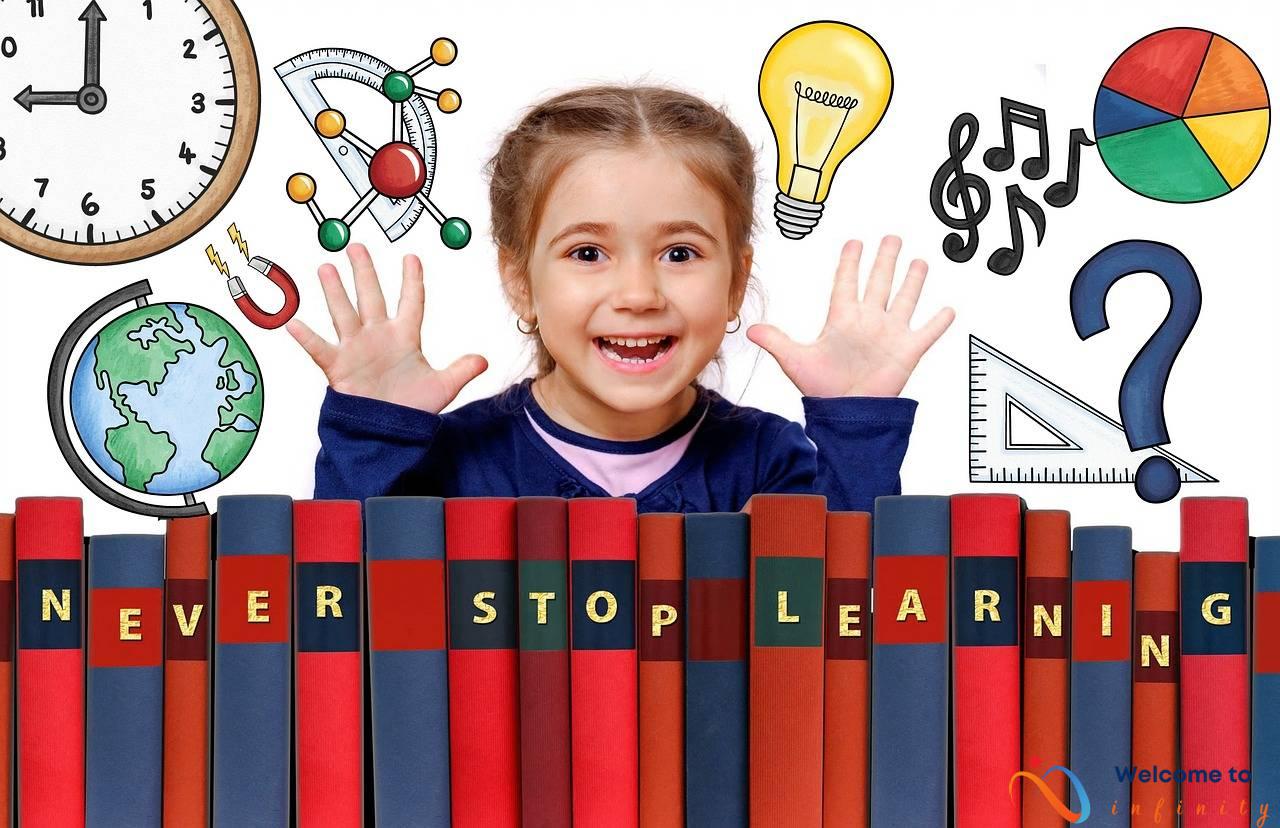Technology has become an integral part of modern-day education, transforming the way it is delivered. Gone are the days when textbooks and lectures were the only means of learning. The use of technology in education has made it more accessible, interactive, and engaging.
Online learning is one way technology has revolutionized education, making it possible for students to access quality education from anywhere in the world. Students can now pursue their studies at their own pace and convenience, taking advantage of the flexibility provided by online courses. E-learning platforms such as Coursera, Udacity, and EdX have become popular among students looking to further their education.
Another technology that has transformed education is virtual reality. VR provides an immersive and interactive learning experience that captures students' attention and enhances their learning outcomes. From field trips to science labs, virtual reality has been used in various ways to enhance students' learning experience.
- Virtual Field Trips – Students can explore different parts of the world without leaving the classroom
- Science Labs – Students can conduct experiments that would be otherwise impossible in the traditional setting.
Artificial intelligence has also become an essential tool in education, improving the quality of education by providing personalized learning, grading, and feedback. AI has made it possible for educators to analyze student data and provide customized learning solutions that cater to individual student needs.
Moreover, augmented reality has also become an essential tool in education, providing an interactive and immersive experience that enhances students' learning. With AR, students can interact with the textbook content, making learning more fun and engaging. AR has also been used to create simulations and games that make learning more immersive and interactive.
Technology has undoubtedly transformed the education landscape, making it more accessible and engaging. However, educators need to strike a balance between the use of technology and traditional teaching methods to ensure that students receive a well-rounded education. The use of technology should complement, not replace, traditional teaching methods.
Online Learning
Online learning has been a game-changer in the education industry. With the advent of technology, anyone with an internet connection can access a wide range of academic resources from anywhere in the world. This convenience and flexibility have made education more accessible to a larger audience, such as working professionals, stay-at-home parents, or students living in rural areas where traditional educational institutions are not available.
One of the advantages of online learning is its flexibility. Online courses do not have set schedules, allowing students to create their own timetable that meets their individual needs. This allows students to work and study without the constraints of a rigid schedule. Additionally, online courses often provide self-paced learning, allowing students to complete the course at their own speed. This flexibility is especially beneficial for those who have other commitments, such as work or family responsibilities.
Online learning also offers a wide range of programs and courses that may not be available in traditional educational institutions. From specialized courses to full academic programs, students have access to a wealth of material that they can choose from. Moreover, online courses are often more affordable than traditional ones, allowing students to save money on tuition fees, travel, and accommodation expenses.
Overall, online learning has transformed education by breaking down geographical barriers, providing flexibility, and offering a vast array of courses and programs. As technology continues to advance, online learning will only get better and play an even greater role in the educational landscape.
Virtual Reality
Virtual reality (VR) has transformed the way education is delivered, offering an immersive and interactive learning experience that was once unimaginable. With VR technology, students can break free from the traditional classroom setting and explore limitless scenarios and environments.
VR has become an essential tool, providing a safe and cost-effective way to learn and experience new things. It has been used in various areas of education, including field trips, science labs, and even art classes. With VR, students can learn about history by visiting different historical sites, experience the human body from the inside out with virtual dissections, or experiment with chemical reactions without creating hazardous situations.
Moreover, VR can help students understand abstract or complex concepts, enabling them to visualize and interact with concepts in a tangible way. For example, physics students can simulate and visualize complex systems such as the solar system, osmosis, or even molecular interactions.
Overall, VR has revolutionized education, making it accessible and engaging for learners of all ages and backgrounds. The potential for VR in education is limitless, and its full potential is yet to be realized.
Applications of Virtual Reality in Education
Virtual reality has opened up new possibilities in education, allowing for an immersive and interactive learning experience. Here are some of the ways virtual reality has been used to enhance learning outcomes:
- Field trips: Virtual reality has allowed students to explore different parts of the world without leaving the classroom. They can visit museums, historical sites, and even outer space, making learning more exciting and engaging.
- Science labs: Virtual reality labs provide a safe and cost-effective way of conducting experiments that would be otherwise impossible in the traditional setting. Students can experience simulations of chemical reactions, physics experiments, and even dissections without any safety concerns.
Virtual reality has also been used to train professionals such as doctors and pilots, providing a simulated environment where they can practice without any risks or consequences. This technology has made it possible for students to learn and experience things that were previously out of reach, creating a new dimension in education.
Virtual Field Trips
Virtual field trips are becoming more and more popular in schools around the world, thanks to virtual reality technology. With virtual reality, students can visit different parts of the world without physically leaving the classroom, providing them with an immersive and interactive learning experience. Virtual field trips can take students to places they may never have the chance to visit in real life, such as ancient Egyptian tombs or the depths of the ocean.
The benefits of virtual field trips are numerous. Virtual reality technology allows students to interact with the environment they are learning about, providing a much richer learning experience than reading about it in a textbook. Students can explore different areas and learn about history, geography, science, and many other subjects in a more engaging way. With virtual field trips, there are no physical barriers to learning, and teachers can provide a tailor-made experience for each student's unique learning needs.
Moreover, virtual field trips are more cost-effective than traditional field trips that require travel, transportation, and accommodation costs. Virtual field trips can also be repeated, allowing students to revisit sites and acquire a deeper understanding of the subject matter. Teachers can use virtual field trips as part of their lessons, assigning tasks and activities to students to reinforce learning outcomes even further.
- Benefits of virtual field trips:
- Interactive and immersive learning environment
- No physical barriers to learning
- Cost-effective and can be repeated
- Can be used as a part of lesson plans
Overall, virtual reality has revolutionized the field of education by making learning more accessible, engaging, and enjoyable. Virtual field trips are just one example of how technology is transforming the way education is delivered. As the technology continues to advance, it will be exciting to see how it will change the education landscape even further.
Science Labs
Virtual reality has transformed the way science classes are conducted. With virtual reality labs, students can conduct experiments and simulations that would otherwise be unsafe, costly, or impossible in a traditional classroom setting.
One of the greatest advantages of virtual reality labs is safety. In traditional labs, experiments involving hazardous chemicals or risky procedures can be dangerous for students. With virtual reality, students can conduct those experiments safely, without risking their health or the environment.
Additionally, virtual reality labs allow for cost-effective experimentation. Building and stocking a traditional lab can be a financial burden for schools and students. With virtual reality labs, the cost of purchasing equipment, chemicals, and materials is eliminated, making science education more accessible to everyone.
Virtual reality labs also offer an immersive and engaging experience for students. With the ability to simulate experiments and procedures, students can gain a deeper and more practical understanding of scientific concepts.
In conclusion, virtual reality labs provide a safe, cost-effective, and engaging way of conducting experiments and simulations in science classes. They allow for experimentation that would be otherwise impossible in the traditional classroom and offer students a practical and immersive learning experience.
Challenges and Limitations of Virtual Reality in Education
Virtual reality has been praised for its ability to provide an immersive and engaging learning experience. However, there are challenges and limitations associated with its use in education.
One of the main challenges of virtual reality in education is the cost associated with the technology. Virtual reality equipment can be expensive, and not all schools and institutions have the budget to invest in it. This limits access for some students and schools, further exacerbating the digital divide.
Another challenge is the lack of standardization and regulation in the industry. There are no set guidelines for virtual reality software in education, meaning that some programs may not be suited to educational purposes or may not align with educational standards. This can lead to inconsistencies in learning outcomes and hinder the effectiveness of virtual reality in education.
Furthermore, there are ethical concerns associated with the use of virtual reality in education. Some argue that the technology could desensitize students to real-world issues and situations, leading to a lack of empathy and understanding. It is important for educators to consider these ethical implications and ensure that virtual reality is used responsibly and with sensitivity.
In summary, while virtual reality has the potential to enhance education, it is important to acknowledge and address the challenges and limitations associated with its use. Educators and institutions must carefully consider the costs, regulation, and ethical implications of virtual reality in education to ensure that it is used effectively and responsibly.
Artificial Intelligence
Artificial intelligence has been a game-changer in the education field, providing personalized learning, grading, and feedback to students. AI technologies enable educators to identify students' strengths and weaknesses to provide customized learning solutions that suit their individual needs. With the help of machine learning algorithms, AI can analyze student data, including their academic performance and learning styles, and provide actionable insights to educators.
One of the most significant benefits of AI in education is its ability to provide personalized feedback to students. The technology can track students' progress and provide instant feedback, helping them to identify areas where they need improvement. This personalized feedback can help students stay motivated and engaged in their learning journey.
AI can also automate grading, saving time for educators while providing accurate and objective assessments. It enables educators to evaluate assignments, quizzes, and exams quickly and accurately, freeing up their time to focus on teaching and providing additional support to struggling students.
However, AI technology has some limitations. It cannot replace human teachers, who are essential in providing students with a well-rounded education that includes the social and emotional aspects of learning. Additionally, there are concerns regarding privacy and data protection, as AI technology relies heavily on data collection and analysis. Educators must ensure that student data is protected and secure while using AI in the classroom.
Overall, AI technology has transformed education by providing personalized learning experiences that enhance student engagement and achievement. However, educators must strike a balance between using AI and traditional teaching methods to ensure that students receive a comprehensive education that prepares them for the future.
Benefits of Artificial Intelligence in Education
Artificial Intelligence (AI) has revolutionized the way education is delivered, providing personalized learning solutions to students. With AI, educators can analyze larger sets of student data, gaining insights into each student's learning preferences, strengths, and areas that require improvement. This information can then be used to create customized lesson plans, making the learning experience more engaging and meaningful.
AI also makes it easier to track student progress and provide timely feedback. With the help of AI-powered grading tools, educators can quickly grade assignments and provide feedback to students, allowing them to identify the areas they need to focus on and improve. This helps students to develop better study habits and take ownership of their learning.
Moreover, AI has made it possible to automate administrative tasks, such as scheduling, record-keeping, and monitoring, freeing up educators' time to focus on more critical tasks such as lesson planning, instruction, and assessment.
AI-powered virtual tutors, chatbots, and learning assistants have also emerged as significant tools in education. They provide personalized learning support to students by addressing their misconceptions, answering their questions, and providing feedback on their work.
In conclusion, the benefits of AI in education cannot be overstated. It enables educators to provide customized learning solutions to students, enhances student engagement, and improves learning outcomes. AI-powered tools such as grading, record-keeping, and chatbots also help educators manage administrative tasks, freeing up time to focus on instruction and assessment. Implementation of AI in education is, therefore, a positive step towards transforming the education landscape.
Limitations of Artificial Intelligence in Education
While artificial intelligence has shown great potential in transforming education, it also has limitations. One of the biggest limitations is that AI cannot replace human teachers. Teachers play a vital role in creating a positive and supportive learning environment by building personal relationships with students, providing emotional support, and fostering a sense of community within the classroom.
AI is not capable of understanding human emotions, interpreting body language, or providing the human touch that is necessary for effective learning. Additionally, AI may lack the cultural awareness and sensitivity required to cater to the diverse needs of students from different backgrounds and cultures.
Another limitation is that AI cannot replace the social aspects of learning, such as collaboration and communication. While AI-powered chatbots can provide quick and efficient feedback, they cannot replace the valuable interaction and discussion that takes place in a classroom setting. Such interaction is important for developing social skills, critical thinking, and problem-solving abilities.
Furthermore, the use of AI in education is faced with ethical challenges, such as bias, privacy concerns, and the potential for increased inequality. Machines learn from data, and if the data is biased, the AI system can perpetuate that bias. Therefore, it is important to ensure that the data used in AI-driven education is diverse and inclusive.
In conclusion, while AI has the potential to transform education, it is not a substitute for human teachers and cannot replace the social and emotional aspects of learning. Educators need to strike a balance between the use of AI and traditional teaching methods to ensure that students receive a comprehensive and well-rounded education.
Augmented Reality
Augmented reality is a technology that superimposes a computer-generated image on a user's view of the real world. This technology has become an essential tool in education, enhancing learning by providing an interactive and immersive experience. By overlaying digital information on the physical world, students can better understand complex concepts and visualize abstract ideas.
One of the main applications of augmented reality in education is textbook interactions. Using an augmented reality app, students can scan a textbook page and unlock interactive content, such as videos, animations, and quizzes. This makes learning more fun and engaging, and allows students to explore concepts at their own pace.
Augmented reality has also been used to create simulations and gamification. Students can experience historical events, scientific experiments, and natural phenomena in an interactive and immersive way. Gamification, on the other hand, uses game elements to make learning more engaging and motivating. Learning becomes more like play, and students are more likely to retain information.
Despite the many benefits of augmented reality in education, there are still several challenges and limitations that need to be addressed. The technology is still relatively new, and not all students have access to the necessary equipment, such as smartphones or tablets. Additionally, the cost of developing and implementing augmented reality content can be high.
However, as the technology becomes more widespread and affordable, augmented reality is expected to become an increasingly important tool in education. It provides opportunities for students to explore complex concepts in a new way and engage more deeply with learning material.
Applications of Augmented Reality in Education
Augmented reality has opened up exciting opportunities for educators to enhance their teaching methods and make the learning experience more interactive and immersive. Over the years, various applications of augmented reality have been explored in education, ranging from textbook interactions, simulations, to gamification.
Textbook interactions using augmented reality have allowed students to interact with the textbook content in a more engaging and fun manner. Students can now scan pages of a textbook and access additional information such as videos, 3D images, or animations that complement the text. This makes learning more interesting and keeps students engaged.
Simulations are another application of augmented reality that has immense potential in education. Augmented reality has the ability to create real-life scenarios that students can interact with and learn from. For example, in medical education, augmented reality can be used to simulate surgeries to help medical students gain hands-on experience before operating on a real patient.
Moreover, gamification has become an increasingly popular teaching method using augmented reality. This involves creating interactive games that serve as a platform for learning. Gamification is being used to teach a wide range of subjects, from math to science. For instance, one can use augmented reality to create a scavenger hunt that helps students learn about historical events or landmarks in a fun way.
In conclusion, augmented reality has become an essential tool in modern education. Its various applications, including textbook interactions, simulations, and gamification, have revolutionized the teaching and learning experience. Augmented reality has the ability to engage students in learning and make it more interesting and fun. As technology continues to advance, we can expect more innovative ways of using augmented reality in education.
Textbook Interactions
Textbook interactions using augmented reality have revolutionized the way students access and interact with the content. By scanning specific pages of a textbook with an augmented reality app, a 3D image pops up and brings the concepts to life in an interactive manner.
Using this technology, students can examine complex diagrams from different angles, manipulate objects, and observe how chemical reactions take place without the need for physical materials. Textbook interactions with augmented reality not only provide a more immersive learning experience but also make learning fun and engaging, keeping students motivated and interested.
Moreover, this method of education helps students retain information better since they can visualize and interact with the content. This technology has been particularly useful for subjects like biology and history, where it is difficult to represent abstract concepts through traditional methods.
While textbook interactions using augmented reality have been successful in most scenarios, there are still some limitations and challenges that need to be addressed. The availability of devices and technology required for augmented reality interactions might not be standard across regions, limiting access to certain students. In addition, developing high-quality content requires a significant amount of time and resources.
Overall, textbook interactions using augmented reality have shown promise in transforming education by making learning more interactive and engaging. With the proper support, resources and infrastructure, augmented reality has the potential to become an essential tool for educators in the future.
Simulations and Gamification
Simulations and gamification have become popular tools in education, and augmented reality has made them even more immersive and interactive. By using augmented reality, students can now interact with simulations and games, making learning more fun and engaging.
Simulations are powerful educational tools that allow students to experience real-life scenarios in a controlled environment. Augmented reality has been used to create simulations for various subjects, including science, math, and history. For example, students can use augmented reality to simulate a chemistry lab or an archaeological dig, enhancing their understanding of the subject matter.
Gamification is another effective way to engage students and make learning more enjoyable. Augmented reality has been used to create educational games that make learning more interactive and competitive. For instance, students can use augmented reality to play a language learning game or a history quiz, making learning more engaging and effective.
Overall, simulations and gamification are important tools in education that can enhance learning outcomes. By incorporating augmented reality into simulations and games, educators can make learning more immersive, interactive, and fun.
Challenges and Limitations of Augmented Reality in Education
Despite the potential benefits of using augmented reality in education, there are still several challenges and limitations that need to be addressed.
- Cost: One of the main challenges of adopting augmented reality in education is the cost. The technology required to create and implement augmented reality systems can be expensive, making it difficult for schools to invest in such technology.
- Technical glitches: Another challenge is the fact that augmented reality technology is still in its developmental stage, which means that it is not yet perfect. Technical glitches, such as delays in image processing or tracking, can affect the quality of the experience and impact the learning outcomes.
- Training requirement: Educators need to undergo extensive training to be able to use augmented reality effectively. This can be time-consuming and may not be feasible for schools with limited resources.
- Age appropriateness: Augmented reality may not be suitable for students of all ages. Younger students may find it difficult to understand or may be scared of the technology, whereas older students may find it too simplistic.
- Content creation: Augmented reality requires specific content creation that takes time and a skilled workforce.
In conclusion, while augmented reality holds great potential in transforming the education landscape, it is essential to address the challenges and limitations associated with its implementation. With proper planning and execution, augmented reality can become a valuable tool for learning in the classroom.
Conclusion
In conclusion, technology has brought numerous benefits to the field of education, making it more accessible and engaging for students. Online learning has made it possible for students to access education from anywhere in the world, while virtual reality, artificial intelligence, and augmented reality have revolutionized the way students learn. However, it is vital for educators to strike a balance between the use of technology and traditional teaching methods.
While technology can enhance the learning experience, it cannot replace the importance of face-to-face interactions and hands-on learning. Educators should carefully evaluate the use of technology in their classrooms and ensure that students are receiving a well-rounded education that encompasses both technological and traditional learning methods.
Furthermore, it is essential to recognize that not all students have access to technology, and it is the responsibility of educators to ensure that no student is left behind. This may involve providing access to technology for students who cannot afford it, exploring alternative learning methods for students who struggle with technology, and being mindful of how technology can exacerbate existing inequalities.
In conclusion, while the benefits of technology in education are vast and undeniable, educators must strive to strike a balance between technology and traditional teaching methods to ensure that all students receive a comprehensive education that prepares them for the future.












